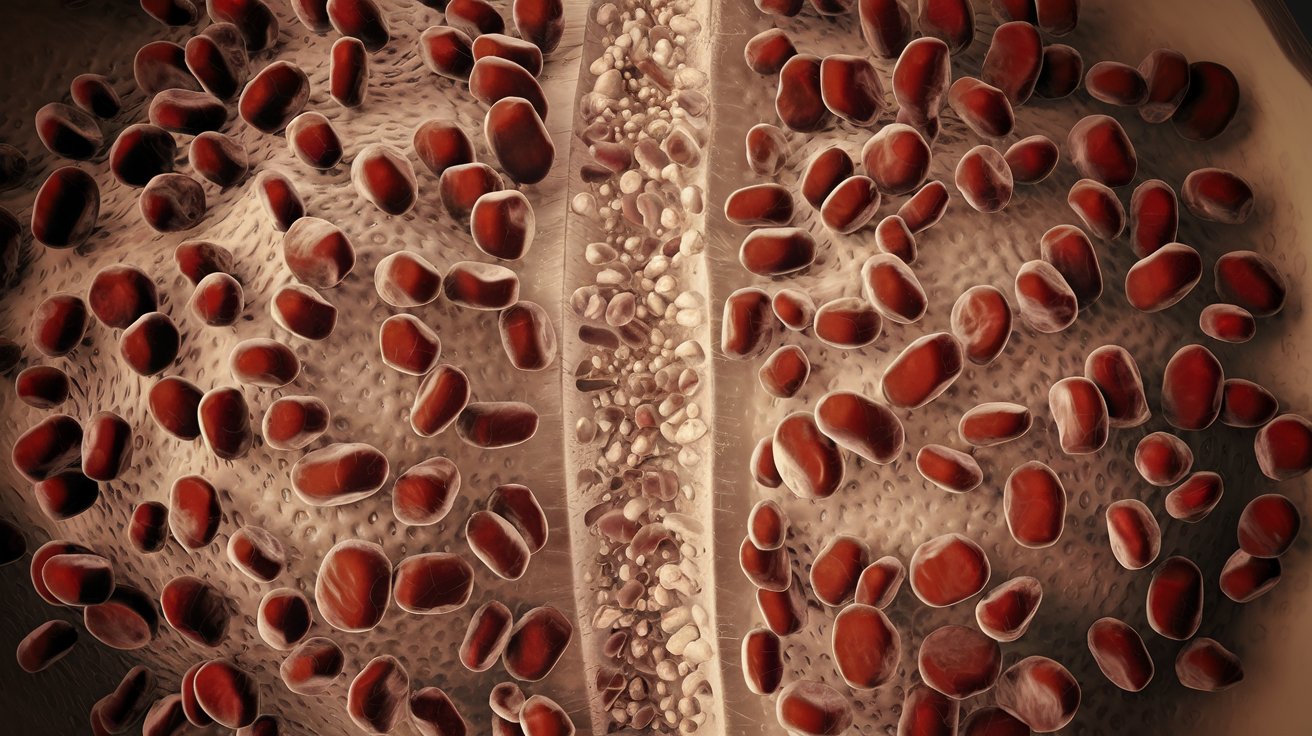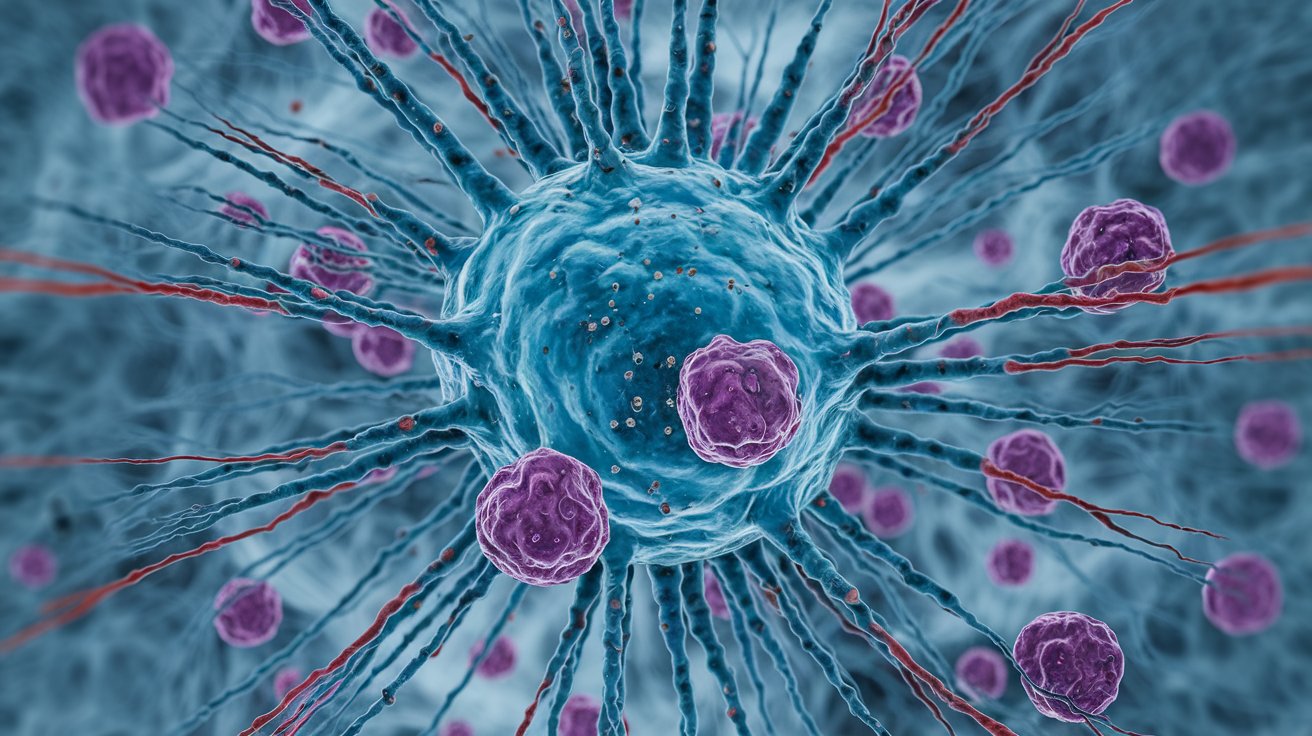
Congenital Dyserythropoietic Anemia (CDA) is a rare blood disorder affecting red blood cell production. This condition leads to anemia, causing fatigue, weakness, and pale skin. CDA is inherited, meaning it's passed down through families. There are three main types: CDA I, CDA II, and CDA III, each with unique characteristics and severity. Symptoms can vary widely, from mild to severe, and may include jaundice, enlarged spleen, and gallstones. Diagnosis often involves blood tests, bone marrow examination, and genetic testing. Treatment options depend on the type and severity but may include blood transfusions, medications, or even bone marrow transplants. Understanding CDA is crucial for managing symptoms and improving quality of life.
Key Takeaways:
- CDA is a rare genetic blood disorder causing anemia. It has three types, each with different symptoms. Treatment options include blood transfusions and bone marrow transplants.
- Living with CDA requires regular monitoring, a healthy diet, and emotional support. Ongoing research aims to develop new treatments and improve the lives of those with CDA.
What is Congenital Dyserythropoietic Anemia?
Congenital Dyserythropoietic Anemia (CDA) is a rare blood disorder affecting red blood cell production. This condition leads to anemia, where the body doesn't have enough healthy red blood cells to carry oxygen. Let's dive into some fascinating facts about CDA.
-
CDA is Genetic: This condition is inherited, meaning it's passed down from parents to children through genes.
-
Three Main Types: There are three primary types of CDA: Type I, Type II, and Type III. Each type has different genetic causes and symptoms.
-
Type I Symptoms: People with CDA Type I often have skeletal abnormalities, such as short stature or finger deformities.
-
Type II is Most Common: CDA Type II, also known as HEMPAS (Hereditary Erythroblastic Multinuclearity with Positive Acidified Serum test), is the most frequently diagnosed type.
-
Type III Rarity: CDA Type III is the rarest form and can sometimes be associated with eye problems and an increased risk of certain cancers.
How CDA Affects the Body
Understanding how CDA impacts the body can help in managing the condition better. Here are some key points:
-
Ineffective Erythropoiesis: CDA causes ineffective erythropoiesis, meaning the bone marrow produces red blood cells that are abnormal and don't function properly.
-
Anemia Symptoms: Common symptoms include fatigue, weakness, pale skin, and shortness of breath due to the lack of healthy red blood cells.
-
Iron Overload: Patients with CDA often experience iron overload because their bodies absorb too much iron from food.
-
Jaundice: Some individuals with CDA may develop jaundice, a condition where the skin and eyes turn yellow due to high bilirubin levels.
-
Splenomegaly: Enlargement of the spleen, known as splenomegaly, is another common symptom in CDA patients.
Diagnosing CDA
Diagnosing CDA involves several tests and examinations. Here are some important facts about the diagnosis process:
-
Blood Tests: Blood tests are crucial for diagnosing CDA. They help determine the number and appearance of red blood cells.
-
Bone Marrow Examination: A bone marrow biopsy can reveal the presence of abnormal red blood cell precursors, which is a hallmark of CDA.
-
Genetic Testing: Genetic tests can identify mutations in specific genes associated with CDA, confirming the diagnosis.
-
Family History: A detailed family history can provide clues, as CDA is inherited.
-
Differential Diagnosis: Doctors must rule out other causes of anemia, such as nutritional deficiencies or other genetic disorders.
Treatment Options for CDA
While there is no cure for CDA, various treatments can help manage the symptoms and improve quality of life. Here are some treatment options:
-
Blood Transfusions: Regular blood transfusions can help maintain healthy red blood cell levels in CDA patients.
-
Iron Chelation Therapy: This treatment helps remove excess iron from the body, preventing iron overload.
-
Splenectomy: In some cases, removing the spleen (splenectomy) can reduce the destruction of red blood cells and improve anemia.
-
Bone Marrow Transplant: A bone marrow transplant may be considered for severe cases, offering a potential cure.
-
Supportive Care: Supportive care, including nutritional support and managing complications, is essential for CDA patients.
Living with CDA
Living with CDA requires ongoing management and support. Here are some important aspects of daily life with this condition:
-
Regular Monitoring: Patients need regular check-ups to monitor their blood counts and iron levels.
-
Healthy Diet: A balanced diet rich in vitamins and minerals can support overall health and well-being.
-
Avoiding Iron Supplements: Since CDA patients are prone to iron overload, they should avoid iron supplements unless prescribed by a doctor.
-
Physical Activity: Regular exercise can help improve energy levels and overall health.
-
Emotional Support: Living with a chronic condition can be challenging, so emotional support from family, friends, or support groups is important.
Research and Advances
Ongoing research is crucial for understanding CDA better and developing new treatments. Here are some recent advances:
-
Gene Therapy: Researchers are exploring gene therapy as a potential treatment for CDA, aiming to correct the genetic mutations causing the disorder.
-
New Medications: New drugs are being developed to improve red blood cell production and reduce symptoms in CDA patients.
-
Clinical Trials: Participating in clinical trials can provide access to cutting-edge treatments and contribute to medical research.
-
Patient Registries: Patient registries help collect data on CDA, aiding researchers in understanding the condition and developing new therapies.
-
Awareness and Advocacy: Increased awareness and advocacy efforts are helping to improve the lives of those with CDA and promote research funding.
Understanding Congenital Dyserythropoietic Anemia
Congenital Dyserythropoietic Anemia (CDA) is a rare blood disorder that affects red blood cell production. Knowing the facts about CDA helps in recognizing symptoms early, seeking proper medical advice, and understanding treatment options. This condition can lead to severe anemia, requiring regular blood transfusions and other medical interventions. Genetic counseling is crucial for families with a history of CDA to understand the risks and implications.
Awareness and education about CDA can improve the quality of life for those affected. Advances in medical research continue to offer hope for better treatments and potential cures. If you or someone you know shows signs of CDA, consulting a healthcare professional is essential. Staying informed and proactive can make a significant difference in managing this condition effectively.
Frequently Asked Questions
Was this page helpful?
Our commitment to delivering trustworthy and engaging content is at the heart of what we do. Each fact on our site is contributed by real users like you, bringing a wealth of diverse insights and information. To ensure the highest standards of accuracy and reliability, our dedicated editors meticulously review each submission. This process guarantees that the facts we share are not only fascinating but also credible. Trust in our commitment to quality and authenticity as you explore and learn with us.


